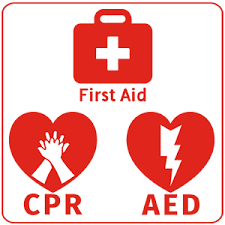BASIC FIRE SAFETY
INTRODUCTION
Basic fire safety training is designed to teach you preventive measures that will eliminate or minimize causes of fire or fire hazards in the workplace, and to teach you proper emergency and evacuation procedures in the event of a fire eliminates the causes of fire and prevent loss of life and property by fire. The training will provide the attendees with information and guidelines, which will assist in recognizing, reporting and controlling as well as eliminating the causes of fires and fire hazards.
The methodology of this training is lively and interactive.
OBJECTIVE
Key learning points:
- Awareness of effects of fire and smoke
- Understanding of the triangle of fire
- Understanding of fire procedures
- Ability to use fire extinguishers safely
- Demonstrate safe operation of portable fire-fighting
- Understand actions to be taken in the event of a fire, including methods of raising the alarm and contacting emergency services
- Understand evacuation and emergency assembly points
TARGET AUDIENCE
Designed for staff at all levels, the course can be adjusted to suit the requirements of specific organizations, premises or course participants.
OUTLINE
INTRODUCTION
- Fire hazards
- Means of escape and assembly point(s)
- Fire separation and compartmentation / zones
- Means of raising alarm and location of Fire Points / Fire Equipment
DISCOVERING A FIRE
- Alert others / activate the alarm
- If ‘small’ fire attempt to extinguish ‘safely
- If unable or unwilling, leave the building by the nearest available exit route (closing doors)
- Ensure Fire Brigade have been called
- Go to assembly point and report as necessary
HEARING THE ALARM
- Fire Marshals Continuous sound
- others (particularly impaired / visitors) to leave by designated routes (close doors and windows, if possible)
- Do not ‘delay’ to collect belongings
- Do not use lifts
- Proceed to assembly point and report as necessary
- Intermittent sound
- Remain within the immediate workplace area and await instructions and/or evacuation signal
- Fire Marshals will discourage the movement of staff, especially between floors
- ‘ensure’ immediate and total evacuation
- Assist
- Prepare for evacuation
UNDERSTANDING FIRE
- Principal causes
- Fire Presence of flammable growth– the ‘unholy trinity’
- The combustion processes
- material (fuel)
- Introduction of ignition source (heat)
- Production of flammable vapor (oxygen)
- Ignition of vapor
- Sustaining combustion (oxygen/fuel/heat)
- Fire suppression
- Fire classification
- A: Carbonaceous materials
- B: Flammable liquids and liquefiable solids
- C: Gases
- D: Metals
- Extinguishing materials
- Water
- Carbon dioxide
- Foam
- Vaporizing liquids
- Dry powder
- Fire blanket
- Sand /
FIREFIGHTING EQUIPMENT
- Fixed
- Sprinklers / drenchers / projectors
- Foam systems
- Gaseous flooding (CO2, Halon and replacements, )
- Mains, inlets and risers, hose-reels
- Portable
- Type
- Siting
- Maintenance
PRACTICAL
Usage of Fire Extinguisher
CERTIFICATION
Completion of the course and its accompanying assessment a certificate of achievement is provided and valid for 2 years.
Q. Who is responsible for Fire Safety in a business?
- If you are the owner, employer or landlord then you are responsible for Fire Safety and are classed as the ‘Responsible Person’. The Responsible Person must;
- Carry out a Fire Risk Assessment.
- Consider people who may be at particularly risk
- Eliminate or reduce any Fire Risks as far as possible
- Provide Fire precautions to deal with any remaining risk
- Put in place any additional Fire Safety measures where flammable or explosive materials are stored
- Create an emergency plan and document their findings
- Review their findings as necessary.
Q. By law, what Fire Safety Training must I give to my staff?
- It is the responsibility of the management to make sure that staff are adequately training on what actions to do in the event of a fire. Training should be given at time of induction to the workplace or ideally in the first month of employment. It is down to the discretion of the management as to how often refresher training should take place, however it should be given at least once a year.
Training should be undertaken by a competent person and a record should be kept. It can be carried out in many ways such as in-house, class room based course or distance learning course.
Everything that staff members needs to know is comprehensively covered in the Fire Safety training.
Q. What is a Fire Risk Assessment?
- A Fire Risk Assessment is an evaluation of your place of work which will identify potential hazards and will determine any risks in your workplace.
Q. Who should carry out the Fire Risk Assessment?
- Risk Assessments should be completed by someone with sufficient training or experience in fire safety.
Q. What are the main points of a Fire Risk Assessment?
- Fire Risk assessments can be broken down into the following points;
- Identify Fire Hazards
- Identify people at risk
- Evaluate, reduce, remove and protect from risk
- Record, plan, inform and train
- Review and revise as needed.
Q. Is a Fire Risk Assessment a one-off process?
- No. Fire Risk Assessments must be reviewed and amended regularly to meet any changes in circumstances or procedures. There is not a specific time scale given but it is widely excepted that the Fire Risk Assessment should be reviewed at least every 12 months.
Q. How can I stop arson in my work place?
- Most serious Fire Risks to common places of work is from deliberate arson attacks. Many building fires start from outside the premises and then spread inside. Do not stack or store combustible materials against outside walls or next to fences. Make sure waste material is stored securely and kept to a minimum.
Q. How do I manage Fire Safety correctly?
- Unfortunately one of the main causes of fatalities from fire is the failure of occupants of the building (both staff and members of the public) to take appropriate action when fire is discovered or a fire alarm is raised. The most effective way to combat this is effective management alongside appropriate staff training.
Fire routines regarding different actives that take place must be drawn up. The responsible person should also ensure that all Fire Safety features are in working order and that no undue fire risks are apparent.
A vital part of any Responsible Person’s duties is the training of staff. All staff members, including part time, temporary, contractors and cleaning staff must be familiar with the actions to be taken in the event of a fire. They must also know how to call the fire services, any main fire prevention measures and where the exits and exit routes are.
Everything that a staff member needs to know is comprehensively covered in the Fire Safety training.
Q. What steps do I need to take to protect disabled staff and members of the public?
- The Responsible Person must take reasonable steps to change practices and procedures that may make it difficult for a disabled person to access facilities and services. For example, can wheelchair negotiate ramps? Are all doors and passages wide enough to allow passage of wheelchair?
It will have to be established whether they will require assistance in the event of an evacuation.
Q. By law what Fire Training must I give to my staff?
- It is the responsibility of the management to make sure that staff are adequately training on what actions to do in the event of a fire. Training should be given at time of induction to the workplace or ideally in the first month of employment. It is down to the discretion of the management as to how often refresher training should take place, however it should be given at least once a year.
Training should be undertaken by a competent person and a record should be kept. It can be carried out in many ways such as in-house, class room based course or distance learning course.
Everything that staff members needs to know is comprehensively covered in the Fire Safety training.
Q. How often should I test Fire Safety equipment?
- The testing and maintenance of fire precautions is a vital responsibility of management. There are serious legal obligations to make sure that all Fire Safety precautions are maintained to a high working standard. It is also a legal requirement to keep an accurate record of these checks. This record should be kept in the form of a Fire Safety Log Book.
Everything that staff members needs to know is comprehensively covered in the Fire Safety training.
If you have any questions that aren’t answered here why not send us an email via our contact page, we will try and find out the answer and get back to you.
Q. What steps do I need to take to protect disabled staff and members of the public?
- The Responsible Person must take reasonable steps to change practices and procedures that may make it difficult for a disabled person to access facilities and services. For example, can wheelchair negotiate ramps? Are all doors and passages wide enough to allow passage of wheelchair?
It will have to be established whether they will require assistance in the event of an evacuation.





